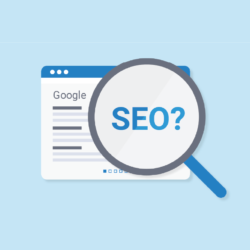On March 11, 2020, COVID-19 was declared a pandemic by the World Health Organization. For better or for worse, nothing has been the same ever since. For the pessimists, they see this as a major blockade from their goals and aspirations. For the optimist, it’s all about innovation and being creative during a time when we are told to be closed off to the rest of the world. No matter what side you are on, one thing is certain, change is coming.
The advertising industry is only one of the many industries affected by the global pandemic of COVID-19. Unfortunately, it is being affected negatively. Advertising companies have cut their advertisement budget as sales plummet. Live events for sports, concerts, etc. which are a significant source of traffic through advertisements have been postponed or canceled. Media and advertisement employees are being laid off in order to cut costs.
Some marketing companies have shifted their focus from live events and offline marketing and to online ads, which only makes sense as most people stay home and stream through streaming services such as YouTube, Twitch, etc. In the near future, we should not be surprised to see more marketing companies target this sector. Matter of fact, we should be expecting a spike in activities from marketing companies in this sector. After all, just like everything else, the marketing companies need to adapt or run the risks of bankruptcy and failure.
The COVID-19 pandemic has ushered in an era of unprecedented challenges, reshaping industries across the globe. Among these, the advertising industry stands as a prime example of adaptability and innovation in the face of adversity. As businesses and consumers grapple with the uncertainties of these times, the advertising landscape is undergoing a transformative journey, marked by both obstacles and opportunities.
The traditional norms of advertising have been upended as lockdowns and social distancing measures altered consumer behavior. The shift from brick-and-mortar shopping to e-commerce skyrocketed, prompting advertisers to pivot their strategies towards online platforms. Digital advertising, already on the rise, surged to the forefront as businesses sought to connect with homebound audiences. Social media platforms, streaming services, and search engines emerged as pivotal channels for reaching consumers, driving brands to reevaluate their approach and invest more in these avenues.
Personalization, always a key aspect of effective advertising, has evolved further during the pandemic. Advertisers are leveraging data analytics to gain insights into changing consumer preferences and tailoring their messages accordingly. The pandemic-driven need for empathy and relevance has fueled a surge in purpose-driven marketing. Brands are aligning themselves with social causes, aiming to resonate with consumers on a deeper level. This not only enhances brand loyalty but also fosters a sense of community during trying times.
Innovations like augmented reality (AR) and virtual reality (VR) are breaking new ground, allowing consumers to interact with products remotely. Virtual try-ons, immersive experiences, and interactive advertisements are not only engaging but also bridge the gap between physical and digital realms. Similarly, influencer marketing has adapted, with influencers creating content that is relatable and sensitive to the current climate, establishing a more genuine connection with their followers.
However, the advertising industry’s evolution during the pandemic hasn’t been without challenges. Budget cuts, economic uncertainty, and the need for agility have forced marketers to carefully evaluate their strategies. Advertisers have had to strike a delicate balance between staying relevant and not appearing opportunistic, as consumer sentiment is highly sensitive during these times.
In conclusion, the advertising industry’s response to the COVID-19 pandemic serves as a testament to its resilience and ability to embrace change. The crisis has accelerated the industry’s transition towards digital platforms, personalized content, and purpose-driven messaging. As the pandemic gradually recedes, these shifts are likely to become permanent fixtures in the advertising landscape, forever altering how brands connect with their audiences. With a blend of innovation, adaptability, and compassion, the advertising industry is not just weathering the storm – it’s emerging stronger and more connected than ever before.



